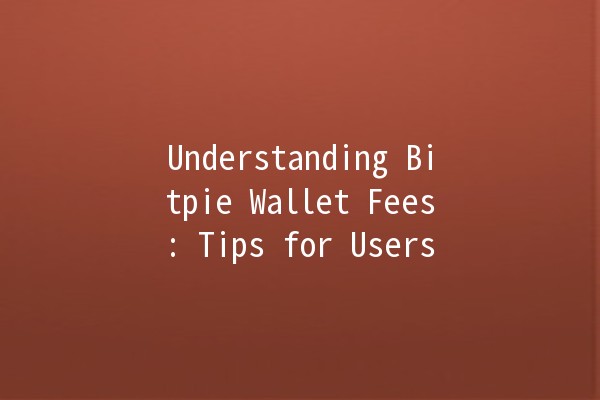
When it comes to managing cryptocurrencies, choosing the right wallet can make all the difference. Among the many options available, the Bitpie wallet has gained popularity for its userfriendly interface and robust security features. However, like any other wallet, it comes with its own set of fees. Understanding these fees is crucial for users to maximize their investment and ensure costeffective transactions. In this article, we’ll dive deep into the topic of Bitpie wallet fees, offering practical tips to help users navigate this essential aspect of cryptocurrency management.
What are Bitpie Wallet Fees?
Bitpie wallet fees refer to the charges associated with using the wallet for cryptocurrency transactions. These fees can vary based on several factors:
Understanding these fees is beneficial for users, as they can impact net gains and overall investment strategies in the volatile world of cryptocurrencies.
Tips for Minimizing Bitpie Wallet Fees

Explanation: Blockchain networks often experience varying transaction fees based on traffic. During peak times, fees can spike significantly.
Application: Monitor the network's activity and try to schedule transactions during periods of lower traffic. Tools such as blockchain explorers can provide information on current fees and network congestion.
Explanation: Fixed transaction fees can become a more significant burden when transferring small amounts.
Application: Instead of making frequent small transfers, consolidate your assets and make fewer, larger transactions to reduce the overall fee impact. For example, instead of sending $10 multiple times, send $50 once.
Explanation: Some wallets allow users to customize their transaction fees. Choosing a higher fee can expedite the transaction, while lower fees may result in longer waits.
Application: If you're not in a rush, select a lower fee option to save on costs. Conversely, if you need a quick transaction, consider adjusting the fee accordingly.
Explanation: Occasionally, wallets and exchanges offer promotional periods during which fees may be reduced or waived.
Application: Keep an eye out for such promotions. Utilize social media channels or newsletters to stay updated. Participating in these promotions can significantly reduce your fees over time.
Explanation: Fees can change as the wallet updates its policies or as external factors affect the industry.
Application: Regularly check for any updates regarding Bitpie wallet fees. Understanding the current fee structure will help you make informed decisions when managing your cryptocurrency.
Common Questions About Bitpie Wallet Fees
When using Bitpie Wallet, users can expect several types of fees, including transaction fees, withdrawal fees, and conversion fees. Transaction fees depend on the network’s conditions at the time, while withdrawal and conversion fees may vary based on amounts and specific conditions. Understanding each type can help users effectively manage their expenses.
Transaction fees are generally determined by the blockchain network's demand at the time of the transaction. Factors such as network congestion, transaction size, and the cryptocurrency type can influence the total fee. Higher traffic periods will typically lead to increased fees, while less busy times can yield lower costs.
Deposit fees can vary depending on the cryptocurrency being transferred and the platform used for the deposit. While some cryptocurrencies may not incur fees, others might, especially when transferring from exchanges. Always check the current policies on deposit fees for specific cryptocurrencies before initiating a transaction to avoid unexpected costs.
It is challenging to avoid fees entirely when transferring cryptocurrencies because fees are usually dictated by the network rather than the wallet itself. However, users can minimize fees by timing their transactions strategically and opting for larger transfers instead of multiple smaller ones. In addition, keep an eye out for promotions that could waive certain fees.
Before making a transaction, users can often view an estimated fee on the Bitpie wallet interface. This estimation includes transaction costs based on the current network conditions. Additionally, users can consult the official Bitpie website or forum discussions for more insights into typical fee structures and recent changes.
One way to avoid conversion fees is to ensure you are sending and receiving the same cryptocurrency type. If you need to exchange currencies, check if the wallet offers internal swaps with minimal fees or promotions. Using direct transactions with the same cryptocurrency will help you avoid additional conversion charges.
Understanding the fee structure associated with using the Bitpie wallet is vital for effective cryptocurrency management. By implementing strategic practices and keeping informed about fee changes, users can optimize their transaction costs and enhance their overall experience in the crypto space.
Taking these actions will not only save you money but will also empower you to manage your assets more effectively, ensuring your cryptocurrency journey is both profitable and efficient. Always remain vigilant and proactive in monitoring your wallet activities, which is key to maximizing your investment returns.

